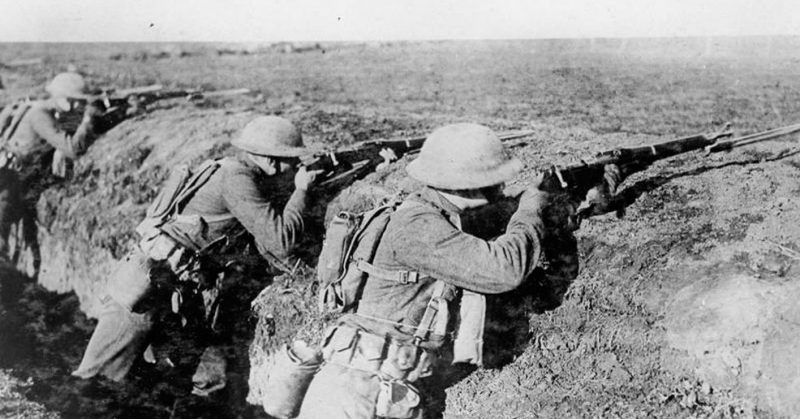To mark America’s entry 100 years ago ̶ April 6, 1917 ̶ into World War I, the Springfield Armoury National Historic Site presented a distinct display, ‘Push the Green Hand Ahead: The Springfield Armoury in World War One.’
There was an exhibit opening welcome on April 6 from 6 to 8 p.m. at the Springfield Armoury.
The exhibit focuses on the armory’s efforts to fulfill its main challenge of the war: producing the famed ‘Springfield Rifle,’ or, the Model 1903, for frontline soldiers.
The story has greater depth than just making rifles. A jury-rigged clock determined rifle production in the thousands. The red hands of the clock were set by the US Army, and calculated the quota required to supply the 3.5 million soldiers who would comprise the American Expeditionary Force.
The green hand was moved to echo total production per day. It reminded and motivated workers to increase production.
A minimum of nine million people lost their lives during the conflict. In France, 1.7 million people, four to five percent of the entire population, died.
Empires disappeared (Austro-Hungarian, Ottoman and Russian). Others were overwhelmed and endeavored for generations to realize normalcy.
The First and Second World wars proved instrumental in establishing a new world order that exists to the present day.
The First World War, as conflicts usually do, ushered in new weapons – the tank, submarine and airplane. They were the new faces of industrial war.
Springfield Armoury was the US Army’s foremost experimental lab for small arms, guiding development and analyzing new technology for the war effort, especially the machine gun.
Readying themselves for the conflict was an immense challenge for the armory. With the assistance of all workers, which peaked at more than 5,000 by the end of 1918, Springfield increased its productivity by 233 percent, working laboriously to meet its objectives by the time of the Armistice, Mass Live reported.
For the first time, women were hired to work on the manufacturing line, and the initial steps were taken to disrupt the color line with African Americans employed.
